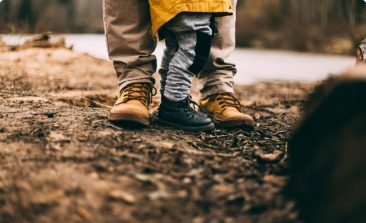Description
Indication
Babies start communicating from the day they are born. Before formal schooling even begins, there are critical periods of rapid development when the brain is at its best in acquiring language (producing sound) and language (understanding and using words). As children get older, their communication skills become more complex. They learn to understand and use language to express their thoughts and feelings and to connect with others.
Parents, family members, and caregivers are children’s primary teachers and communication models. But it doesn’t take apps, videos, or other special tools to make the most of this crucial time. Your daily interactions with your children help build their brains and support their communication development.
How do babies communicate?
Babies are born with the ability to cry, so they communicate for a while. Your baby’s cries generally tell you that something is wrong: an empty stomach, a wet bottom, cold feet, tiredness, or a need to be held and cuddled.
Sometimes the type of crying can tell what a baby needs – for example, the cry “I’m hungry” can be short and deep, while “I’m upset” can be clipped. Before you know it, you’ll likely be able to identify what your baby is expressing and respond accordingly.
But babies can also cry when they’re feeling overwhelmed by all the sights and sounds of the world — or for no apparent reason. So if your baby is crying and won’t be soothed right away, remember that crying is a baby’s response when they are overworked.
Babies also use other sounds, facial expressions, and body movements to connect with you. Learning to recognize them is rewarding and strengthens your bond with your baby.
Pay attention to how your child responds to your voice. The sound of your voice means food, warmth, touch and comfort. When your baby cries, see how quickly your approaching voice soothes them. See how closely your baby listens when you speak lovingly. Even if you stare into the distance, your baby will pay close attention to your voice when speaking. Your baby can subtly adjust posture or facial expressions, or even move their arms and legs to the beat of your speech.
You might also like
Parenting Updates: Subscribe Now!

ALL UPDATES
Go from pregnancy to adolescents with our email bulletins, loaded with reasonable, modern data about bringing up youngsters and taking care of yourself as a parent.
SUBSCRIBE NOW
MOVIE REVIEWS
Find the best motion pictures for your family with our youngster amicable surveys. Search new deliveries and more seasoned motion pictures by age, rating and type.
SUBSCRIBE NOW
MENTAL HEALTH RESOURCES
Is it safe to say that you are an expert working with families? Get data about kid, adolescent and parent psychological well-being and prosperity.
SUBSCRIBE NOW











































